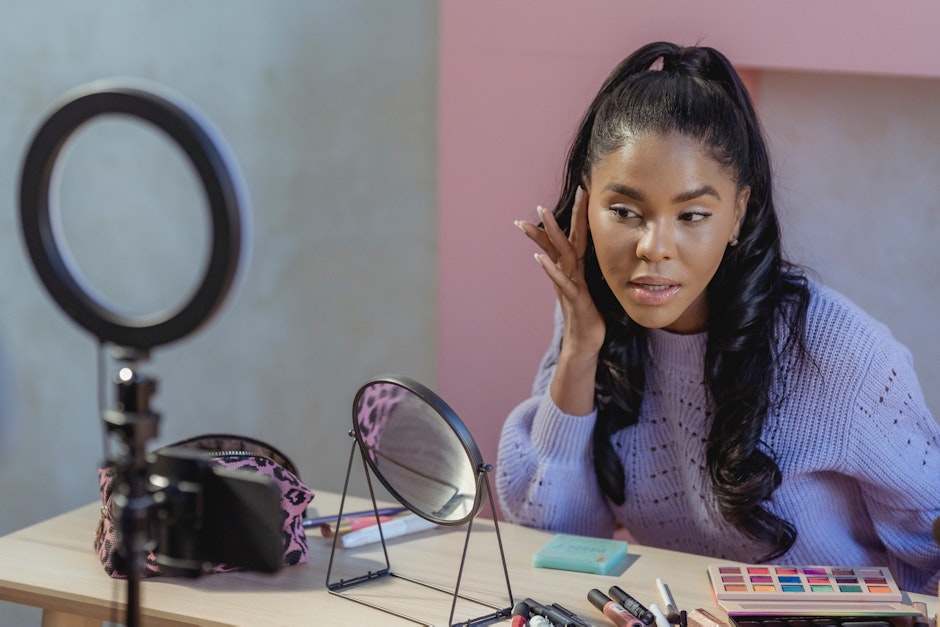The return of live shopping in the age of influencer marketing
Learn about how influencer marketing is influencing the rise of live shopping.

The concept of live shopping isn’t new - it’s a tried and tested format that’s been around since the launch of home shopping channel QVC in 1986.
However, as the digital transformation of traditional media continues at pace, it has been reimagined for the modern world and the social media native consumer.
The key difference in live shopping 2.0 is that brands are now armed with new tools – and influencers – to create more engaging shopping content and experiences and deliver a frictionless user experience, driving greater results and ROI as a result.
Social commerce revolution
We’ve all read the stats on how the Covid-19 pandemic forced brands and businesses to cram years of e-commerce growth into a matter of months, when suddenly the world went into lockdown and the only purchases we could make were online. Now, as we emerge from the pandemic, shopping on social media will grow three times as fast as e-commerce itself to reach £1.2trn by 2025, with Millennials and Gen Z accounting for 62% of global spend.
Add to that the rise of influencer marketing and the rapid growth of online video, and it’s no wonder that social commerce is experiencing a boom. The human connection that everyone has been craving, and the need for brands and platforms to integrate seamlessly into the lifestyle of consumers, has paved the way for live-streaming to close the path to purchase.
The live shopping evolution with influencers and creators really started back in July 2020 with Amazon, Instagram and Facebook and TikTok innovating with formats that allowed influencers to bring their favorite product picks to life through live video. Fast forward to 2022 and we’re in the midst of a new retail revolution; according to the 2022 Instagram Trend Report, one in every four teens and young adults (27%) expect to shop directly through their social media feeds and in-app features this year.
Increasingly, the places where we consume our content are evolving to allow us to shop directly in platform. Instagram Shopping has been consistently optimizing and introducing new tools over the last few years – early signals that showed Meta’s intentions for social commerce. TikTok’s expanding Shopify partnership is proving the same.
AR and VR innovation
It’s no surprise that other platforms have been experimenting with new tools to turn this vision into a reality and help brands and influencers monetize their content. By creating seamless pathways for consumers to shop in-app once they see a product they like, time spent on the platform increases and so does the opportunity to drive revenue through advertising.
Alongside the improvements in social commerce UX, many platforms are introducing AR and VR innovations into the storytelling experience in-app, enabling users to experiment with and experience products before they purchase. The recent launch of Pinterest’s AR Try On for Home Décor provides an ultimate online home shopping experience by allowing Pinners to virtually place items seen on Pinterest in their home, moving seamlessly from inspiration to realization right from their phone.
Similarly, Snapchat has been advancing the practical uses of AR by allowing brands to connect their product catalogs to their AR Shopping Lens experiences so that users can seamlessly interact with, try on, and click to purchase multiple products in a single Lens. As brands charge forward into the metaverse, we can expect to see much more innovation in this space, blurring the boundaries between the real and online shopping experience.
The power of influencers
It’s clear that with 97% of Gen Z consumers using social media as the main source for their shopping inspiration, tapping into influencers will be key in driving success for brands in the world of social commerce.
Firstly, influencers are skilled storytellers and content creators which makes them a perfect partner to activate with this new form of live shopping – they have the know-how and experience to bring product to life in ways their audiences will genuinely engage with and respond to.
Secondly, with consumers already relying heavily on influencer recommendations, it makes them ideal conduits to integrate live shopping features into their content to close the path to purchase and create a seamless journey for customers. This will only increase in relevance as the attention span of younger generations declines and older generations are increasingly time poor.
Merging the worlds of content and commerce through social shopping is a move that brands and creators can’t ignore, as it is increasingly what consumers come to expect. It’s essential for brands to keep an eye on developments in this space and in particular to leverage influencers as the creators of their social commerce content, capitalizing on the new shopping and AR tools to drive a greater impact on sales and conversion which they can directly attribute to their influencer marketing, thereby proving ROI.

